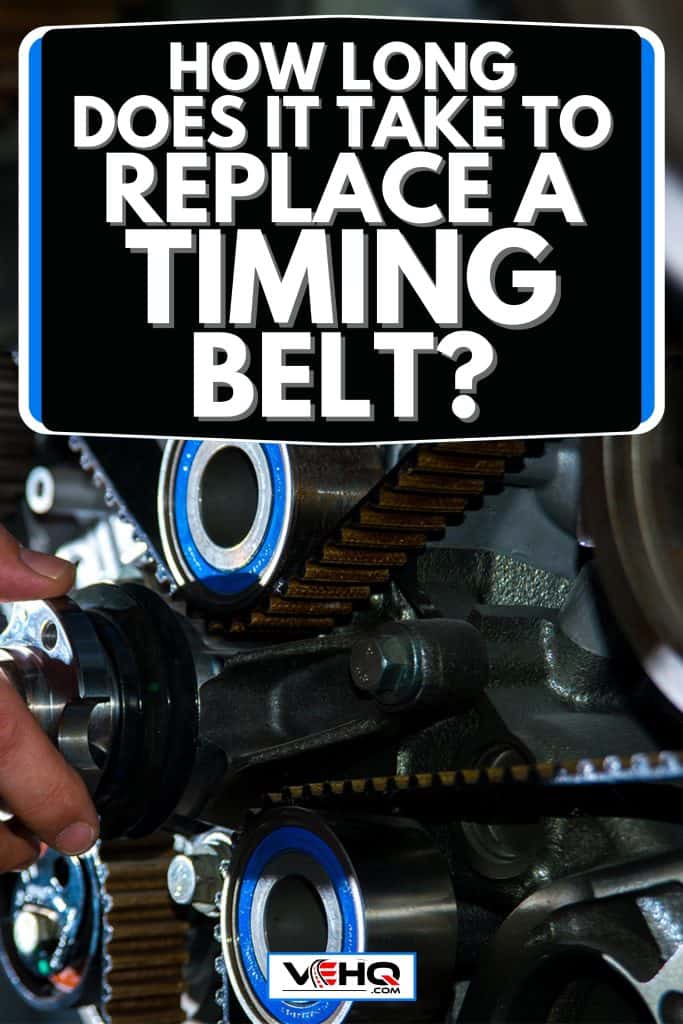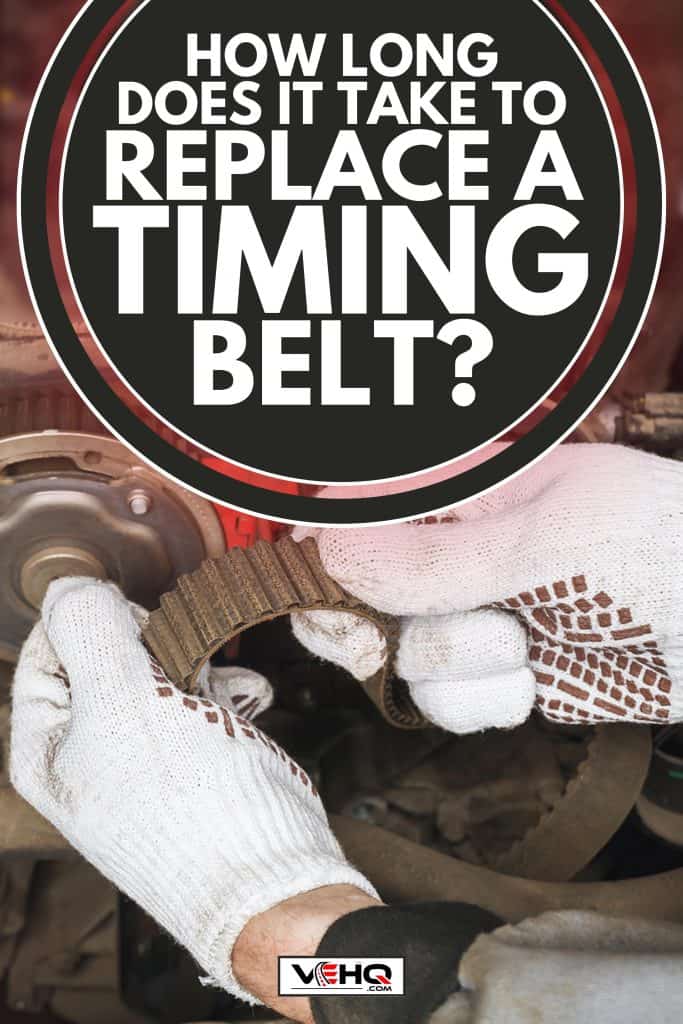Are you familiar with the phrase "timing is everything"? Well, it couldn't be more true when it comes to the timing belt in your car.
This critical component plays a vital role in keeping your engine running smoothly and efficiently. But, like many car owners, you may be wondering: how long does it take to replace a timing belt? The answer may surprise you.
In this article, we'll talk about the intricacies of timing belt replacement.
We'll explore the factors that can affect the time it takes to replace a timing belt and provide you with valuable insights into this essential aspect of car maintenance.
But that's not all. We'll also share tips and tricks to help you keep your vehicle running at peak performance so that you can hit the road with confidence.
So, sit back and relax as we guide you through the world of timing belts. By the end of this article, you'll have all the information you need to make informed decisions about your car's upkeep. Ready to get started? Let's go!
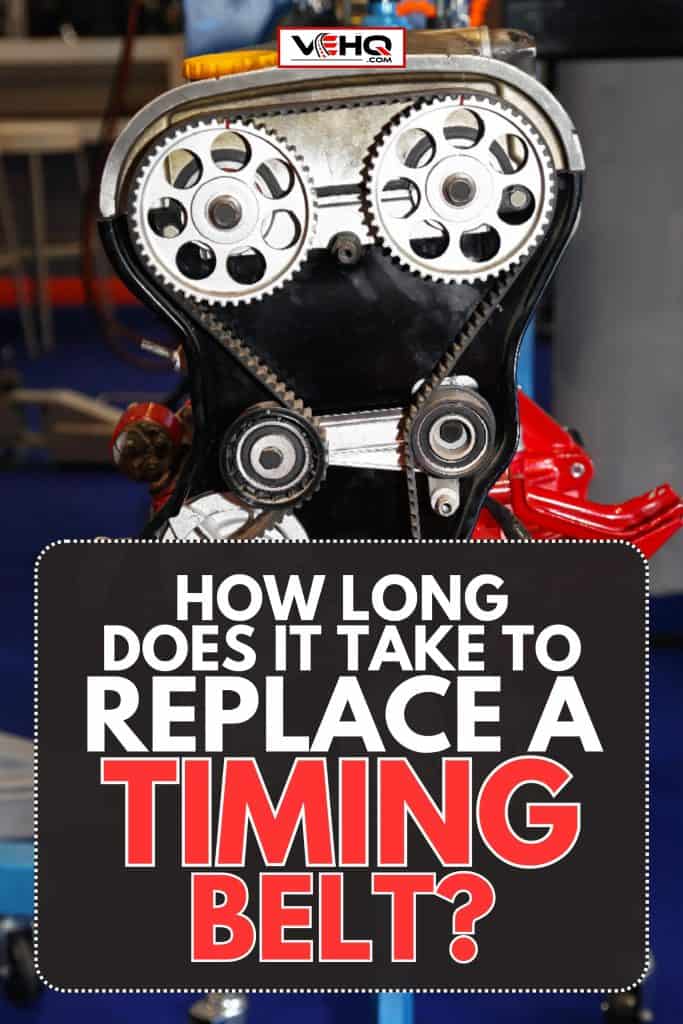
How Long Does it Take to Replace a Timing Belt?
Imagine you're at the mechanic's shop, eager to get your car back but slightly concerned about the ticking clock. You wonder: just how long does it take to replace a timing belt? Let's dive into this automotive mystery.
First, hold onto your hat because timing belt replacement is quite an intricate operation. It's not a quick job like changing a tire or oil.
From the moment your mechanic tackles the task, it typically takes between 4 and 6 hours to replace a timing belt. But wait, there's more to it.
Your car's make and model also affect the duration of this labor-intensive process. Not all engines are created equal, after all.
Moreover, the expertise of the mechanic comes into play. An experienced professional will likely complete the process quicker while a newbie may take longer.
To sum it all up, patience is key when waiting for your timing belt replacement. Several factors affect the time it takes, but it's crucial to keep your car running smoothly.
Timing Belt Maintenance and Lifespan
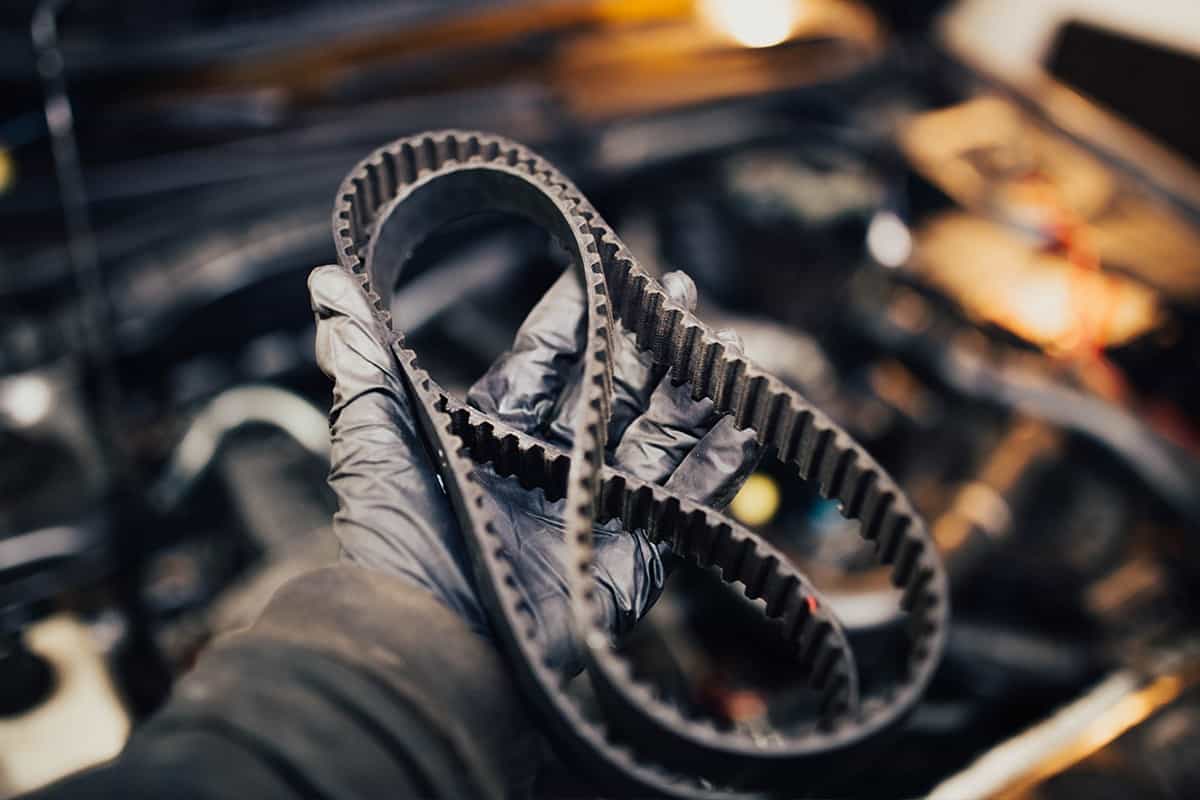
One crucial aspect of engine care is maintaining the health of your vehicle's timing belt.
This section delves into the lifespan of these essential components and their associated maintenance requirements.
How Long Will a Timing Belt Last?
The longevity of a vehicle's timing belt depends on various factors, including the specific engine type and model.
On average, these rubber timing belts last between 60,000 and 100,000 miles. As each vehicle has different requirements, consult your owner's manual for the recommended replacement interval.
Manufacturers provide these guidelines to ensure the belt does not break, potentially causing severe engine damage.
Keep in mind that environmental factors can impact a timing belt's lifespan, and a belt may require replacement sooner under harsh conditions.
Timing Belt Maintenance
Routine inspections are vital for maintaining the timing belt's optimal performance. Consider having a mechanic check the belt for signs of wear, such as fraying, cracking, or glazing. Detecting these issues early ensures your engine runs smoothly and helps prevent unforeseen failures.
In addition to inspections, it's essential to replace related components when servicing the timing belt. This practice reduces the risk of further breakdowns and improves the overall longevity of the engine.
Remember to consult your owner's manual and mechanic for specific guidance on maintaining your vehicle's timing belt.
Taking these steps can greatly improve engine performance and keep your car running reliably for years to come.
How Do I Know if My Timing Belt Needs Replacing?
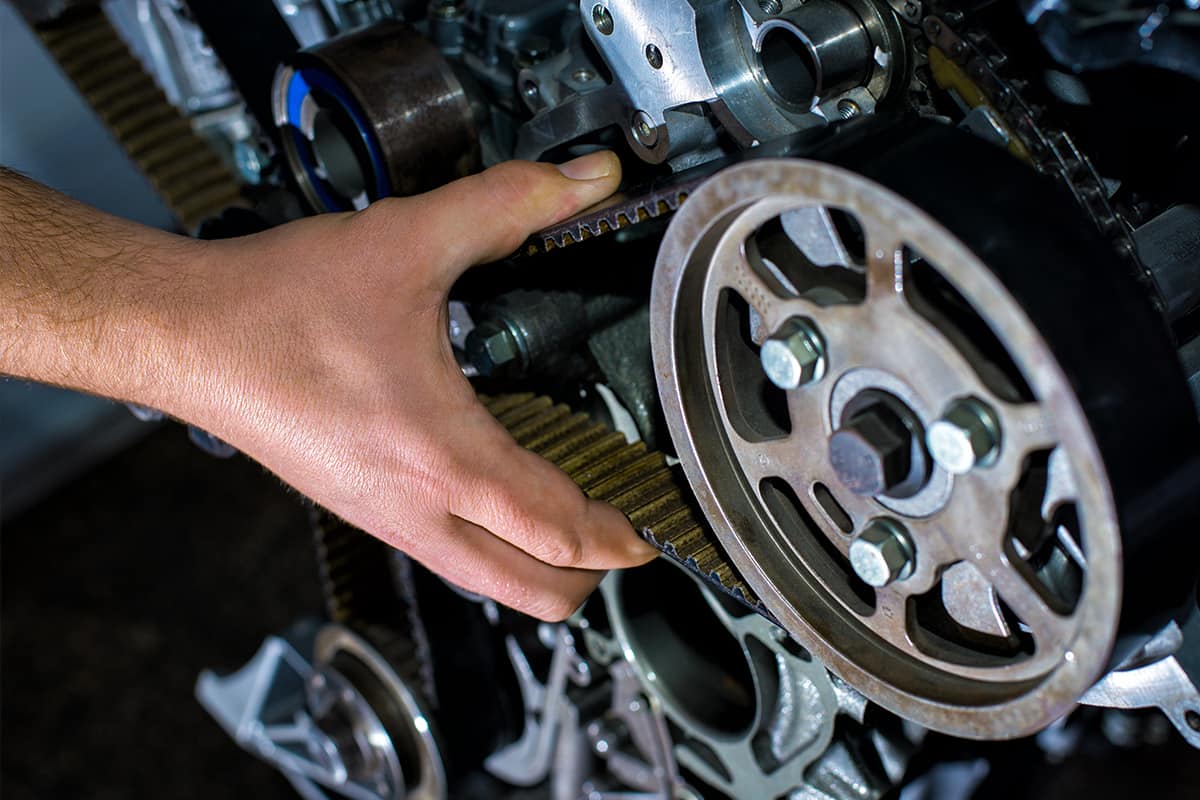
If you're concerned about the health of your timing belt, keep an eye out for some common warning signs. Your car may exhibit a ticking noise from the engine, or the check engine light could come on.
Additionally, you might experience misfires, decreased engine performance, or even engine failure in extreme cases. It's essential to stay vigilant and address issues promptly to avoid costly repairs.
What Causes a Timing Belt to Break?
A variety of factors can contribute to a timing belt breaking, such as:
- Age: Over time, the rubber material can weaken and become more susceptible to damage.
- Incorrect tension or alignment: If the belt is too tight or too loose, or if it is not aligned properly, it could lead to premature wear.
- Contaminants: Oil leaks and dirt can cause the belt to degrade faster.
It's crucial to perform regular maintenance on your vehicle to minimize the risk of a broken timing belt.
What Happens If You Don't Replace Your Timing Belt?
Neglecting to replace a worn timing belt can have severe consequences. The belt may eventually snap, causing valve and piston damage within the engine.
In the worst-case scenario, this could lead to complete engine failure, resulting in costly repairs or even the need for a new engine.
It's far more cost effective to replace the timing belt according to the manufacturer's recommendations, typically every 75,000 to 100,000 miles.
Maintaining your vehicle and addressing timing belt issues promptly will ensure smooth engine performance and prevent costly damage.
Don't wait for disaster to strike; take action at the first sign of trouble to keep your engine running in optimal condition.
What Happens if the Timing Belt Breaks While Driving?
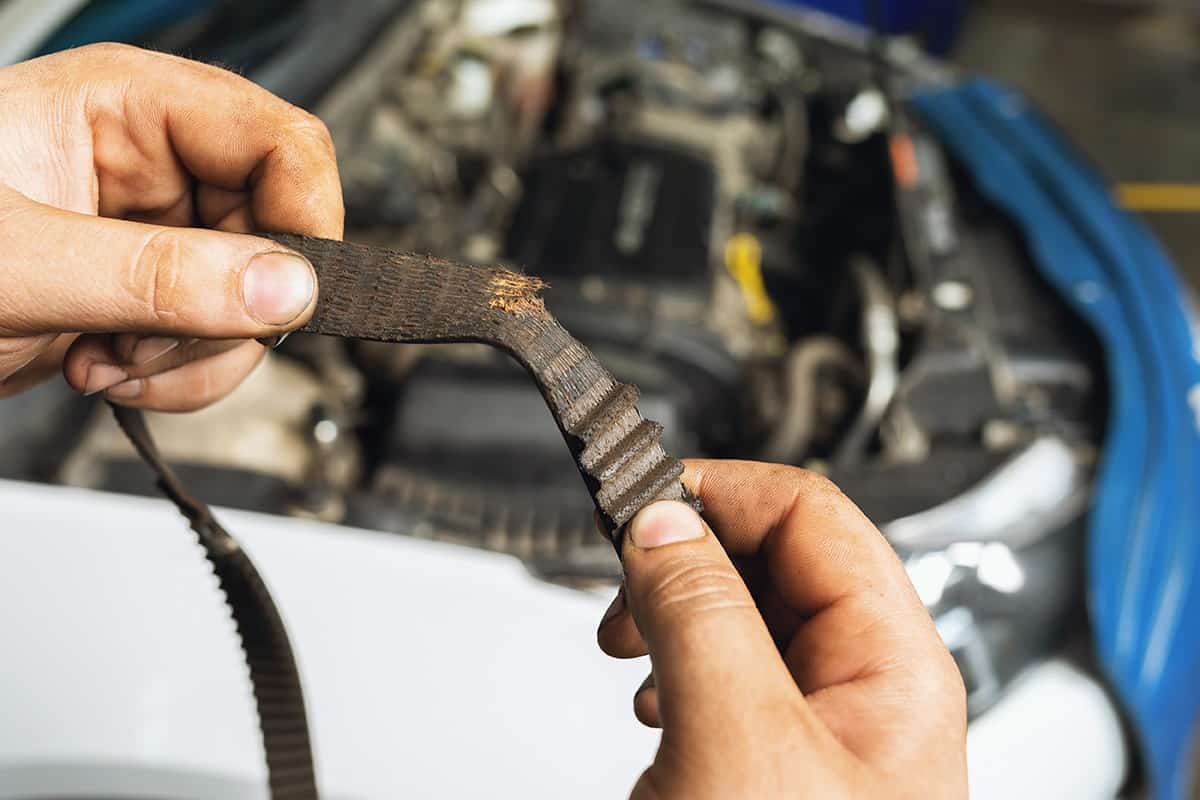
If the timing belt breaks while you're driving, your engine will stop abruptly. This happens because the timing belt synchronizes the movement of the crankshaft and camshafts. Without it, the engine's intake and exhaust valves won't open and close in time with the pistons.
A broken timing belt may result in severe engine damage, including broken valves and bent pistons. So it's crucial to replace the timing belt according to your car's service manual schedule to avoid this scenario.
Can You Still Drive Your Car Even with a Broken Timing Belt?
With a broken timing belt, it's impossible to drive your car. As mentioned earlier, the timing belt ensures the proper functioning of the engine. Once it breaks, the engine will cease to work, leaving you stranded.
To prevent timing belt breakage, it's essential to stick to your car's maintenance schedule. The replacement interval varies, with some timing belts requiring replacement after 40,000 miles, while others last up to 150,000 miles.
Check your vehicle's service manual for specific timing belt replacement recommendations. Remember, prevention is better than dealing with the consequences of a broken timing belt.
Take the time to ensure the correct maintenance is performed, and you'll keep your engine running smoothly without any unexpected surprises.
Timing Belt Replacement Cost and Factors
Have you ever wondered about the cost of replacing your car's timing belt? Well, buckle up as we dive into the factors that affect the price of this essential maintenance!
First off, the timing belt replacement cost varies based on the make and model of your vehicle. Some cars are simply more expensive to work on, while others are more budget-friendly.
One major determinant of the cost is whether you opt for a dealership or an independent auto repair shop. Dealerships might charge a premium for their specialized expertise, whereas local mechanics may offer more competitive rates.
Curious about the actual costs? On average, a timing belt replacement ranges from $567 to $743.
This includes both parts and labor, but remember, these national averages might not cover additional fees, taxes, or model-specific factors.
Stay on top of your vehicle's maintenance schedule to keep it running like a well-oiled machine.
Components Involved in Timing Belt Replacement
When replacing a timing belt, several components interact and play critical roles. The main star is, of course, the timing belt itself. It synchronizes the engine's camshaft and crankshaft, ensuring smooth operation.
The camshaft controls the intake and exhaust valves, while the crankshaft takes care of the pistons. Their harmony is essential for your engine's performance. Don't forget the water pump! It circulates coolant to regulate engine temperature.
A variety of pulleys also have starring roles in this automotive show, including the tensioner pulley, idler pulley, and other accessory pulleys driving components like the alternator and power steering pump. These pulleys are often replaced or adjusted during a timing belt replacement.
Next comes the supporting cast: gaskets, bearings, o-rings, and seals protect vital engine parts and keep contaminants out. These components are crucial to maintain the efficient function of the overall system.
Don't overlook the importance of coolant during this process; its temperature regulation helps keep your engine in top shape.
Each of these components plays its part in the timing belt replacement process, ensuring optimal performance of your vehicle.
The harmony of these parts results in a smooth and efficient engine, ready to take you on your next adventure.
Alternatives and Additional Considerations
When it comes to engine components, there's more than just the timing belt to consider.
To start, some vehicles have a timing chain instead of a belt, which tends to last longer and requires replacement around 100,000 miles or even the lifetime of the engine.
Moreover, you might come across the serpentine belt that works differently. This belt drives several components like the alternator, power steering pump, and cooling system.
Remember to check your repair manual for maintenance intervals and keep an eye on its condition.
When replacing a timing belt, it's advisable to inspect the timing belt tensioner as well.
A faulty tensioner can cause premature failure, so it's best to invest in a timing belt kit that includes the necessary components, even if the initial cost is a little higher.
Additionally, if you have an older car or a used car, consider the overall condition of the vehicle before committing to a hefty repair.
If the car requires work on the oil pump, alternator, or drive belts, it might make more sense financially to consider a replacement.
Lastly, remember that every car is unique. Always consult your owner's manual or a trusted mechanic for accurate information regarding your specific make, model, and maintenance needs.
And while you're at it, don't forget about the importance of a proper torque application to ensure smooth engine performance. Happy motoring!
Check out some of our previously written posts below:

